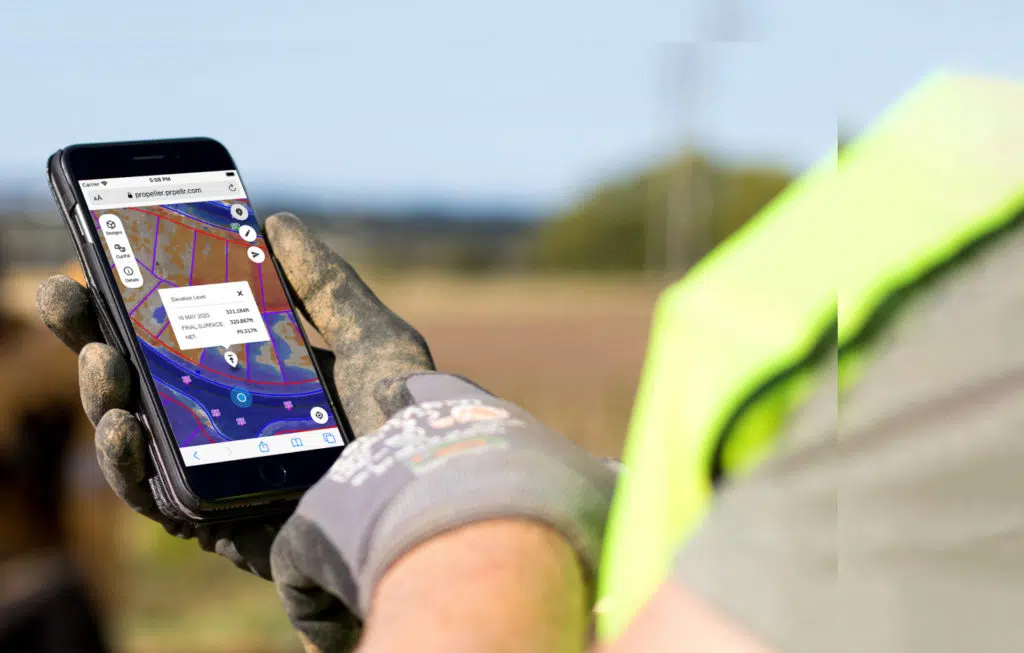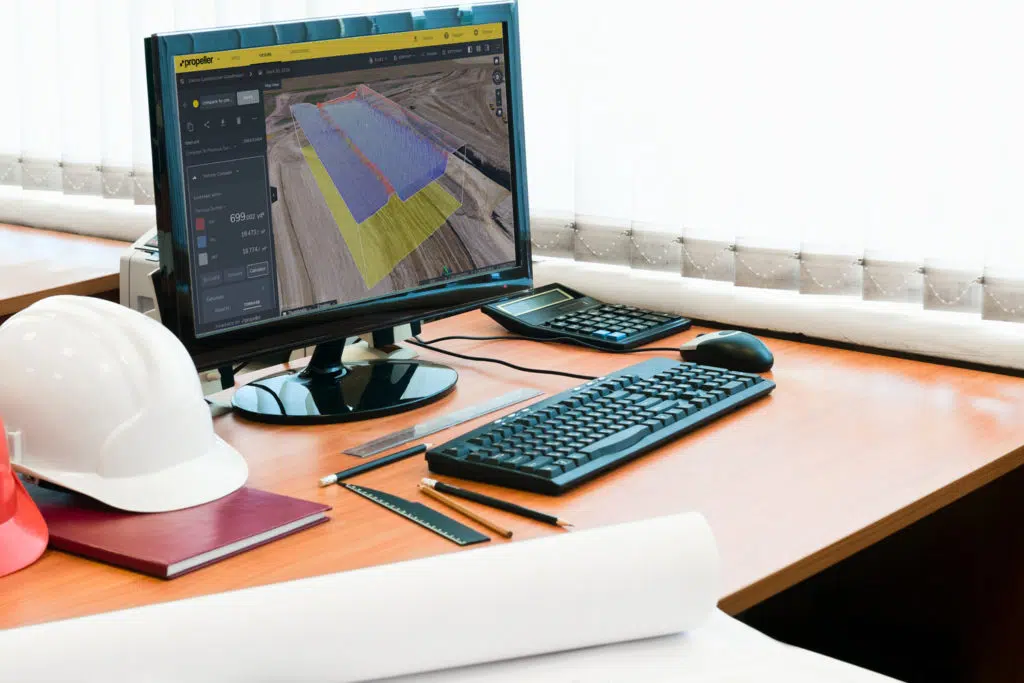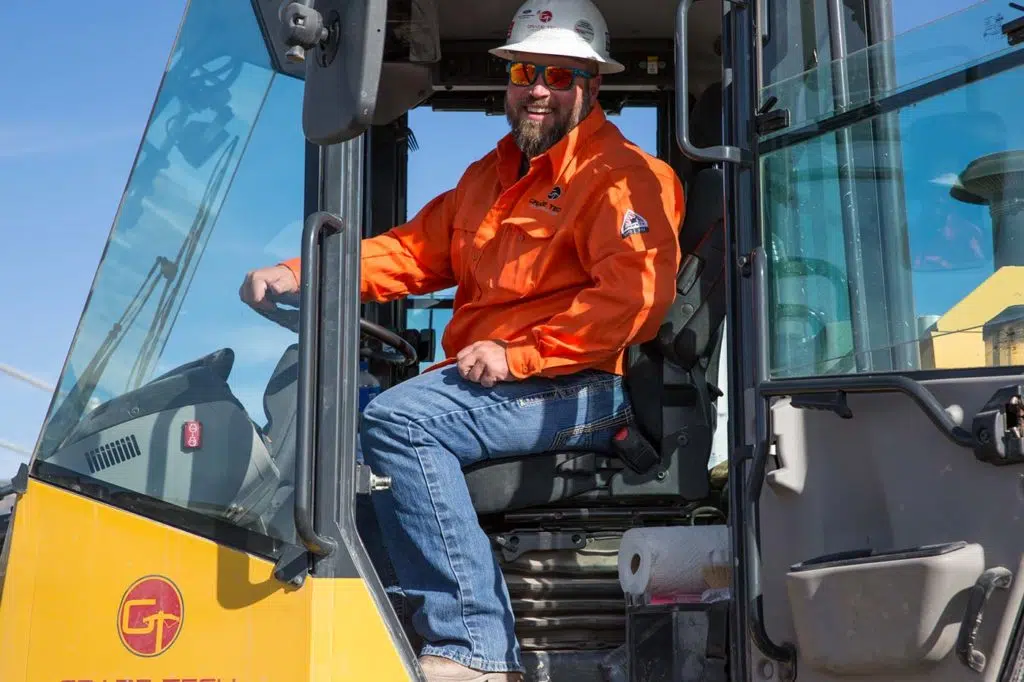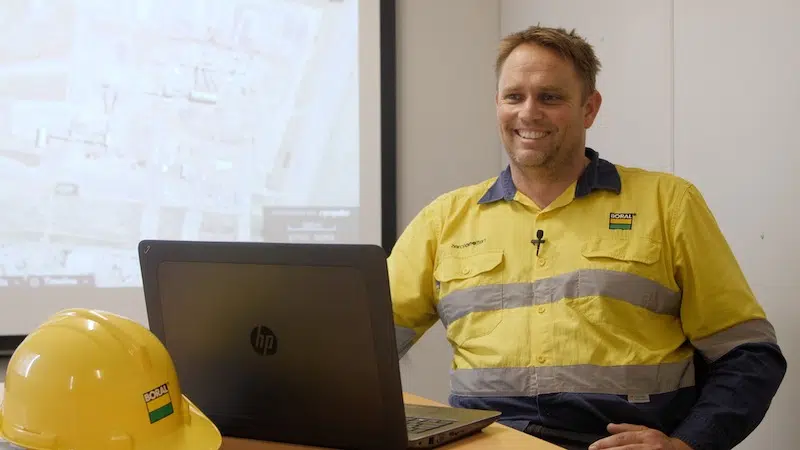What’s the ROI of Construction Tech? Should You Invest?
You’ve probably heard that technology adoption is on the rise across a wide range of construction uses, from accounting to bids/takeoff to worksite management. The most recent annual construction technology report from JBKnowledge confirms what we’ve all heard: more and more earthworks companies are making construction tech a part of their everyday business practices.
But for most contractors, blindly investing in all the technology they can get their hands on doesn’t make good business sense. It all adds up, and while it’s true that time is money, money is also money. It pays—literally—to do your due diligence before committing to a big technology purchase.
And that’s where a lot of firms simply stop when looking at construction technology. The commitment feels too overwhelming, and new tech investments get filed under the mental heading of “things to worry about next year.”
If this sounds like you, we’re here to help! There’s no need to be overly cautious about technology adoption because there’s a simple formula you can use to determine whether any given tech solution makes financial sense for you: return on investment (ROI).

How to calculate ROI
The simplest way to think about ROI is as a measure of benefit versus cost. The formula for this benefit/cost ratio is a simple one.:
Technology benefits / technology costs = ROI
If the result is greater than 1, you have a positive ROI. If the result is less than 1, you have a negative ROI.
For example, if we invest $1,000 in a technology platform that yields $5,000 in benefit, our formula looks like this:
$5,000 / $1,000 = 5
That’s a 5x ROI, meaning that we received a value equal to five times our original investment. Wall Street would kill for that kind of return!
To calculate the Cost, include details like:
- Software licensing fees
- Hardware purchases
- Time spent training staff and troubleshooting
Calculating the Benefit of technology is a bit more complicated. That number might include:
- Time savings from using software
- Labor savings
- Value of improving communication/reducing friction points
Benefit is a trickier number to calculate because some of the value in construction software is indirect. For instance, you might adopt a communication tool to streamline communication between the office and the field. One result of improved communication might be fewer disputes with subcontractors or clients, and there’s tangible value in that. If you aren’t paying close attention, downstream impacts like this can be hard to measure.
In the end, you may have to make a few educated guesses. Decide which metrics matter most to you and focus on tracking those. Just don’t lose sight of other benefits that should also factor into your overall ROI calculation.

How to maximize ROI
Now that you know how to calculate the ROI of construction tech, how can you ensure you’re getting the most from the tools you’ve chosen to invest in? Even if you’re getting a positive ROI, the higher the number, the better.
Here are a few ways to take your investment further:
- Think platforms, not single services: Invest in software platforms that do more than one thing. Using tools that integrate with each other and create a cohesive digital platform is a massive benefit in a world where communication between computers is nearly as important as communication between people. When technologies play nicely together, you save the time and headache involved in trying to translate between one system and another.
- Train workers to use digital tools: The skilled labor shortage has hit the construction industry hard, and technology can help bridge the gap—but only if workers are adequately trained to use it. PwC found that one of the three most significant areas for growth in digital technology is construction. But companies that digitize first and optimize second are at a disadvantage, so take a close look at your processes as you roll out updated technology and make sure everyone on the team understands the How and the Why behind your tech.
Real-world examples
Let’s look at some of the ways our customers have seen construction technology translate into very real dollar amounts.
Grade Tech
When Grade Tech calculated their ROI after adopting Propeller, they came up with an ROI of 10 times their spend! Here’s some of the detail behind that number:
- They saved 10-20 hours of labor per week with our drone surveying workflow, which came out to a value of tens of thousands of dollars per year.
- They saved $90k on a single job by calculating the balance point of a site within 24 hours of flying. That quick data saved them from hauling material across town, and allowed them to transfer all of their excess earth to a site just across the road.
- They’ve eliminated almost all downtime by flying sites a day or two before their crew arrives. If a site isn’t ready for them, they have the pictures to prove it. Photographic evidence ends up being both an insurance policy and a time-saver. They save $3500 per day of avoided downtime.
- Rory Hall, Grade Tech’s Operations Manager, estimates they earned an additional $1.5 million in revenue in their first year with Propeller alone.

Boral
Before Propeller, Boral had almost no data to effectively measure their inventory management efficiency. They had to outsource their surveying to a third party who flew their site every six months. Their margin of error was high, but at the time, they didn’t see an alternative.
When Boral compared their results with Propeller to their previous surveying workflow, they found that they ended up with about $25,000 variance across six sites and millions of tons. That’s “as good as it gets,” says Craig Burr, Boral’s quarry support manager.

Wills Bros
Jonathan Wills told us, “While we’re still learning about the true scale of its potential, it’s fair to say that Propeller has already made a huge contribution to our bottom line.”
For Wills Bros, the clearest initial benefit of adopting Propeller PPK was speed. They were able to complete an initial earthwork takeoff for a major project in a small fraction of the time it would have normally taken, without compromising a bit on data quality.
“Savings on labor costs alone have been considerable, given the fact that on so many occasions we can obtain detailed project data within a second, rather than sending a man on site to survey for information. From the outset, the time savings are immense.”




